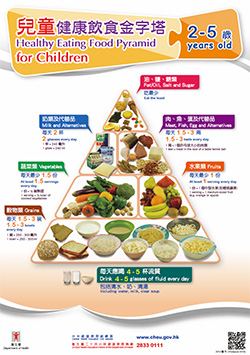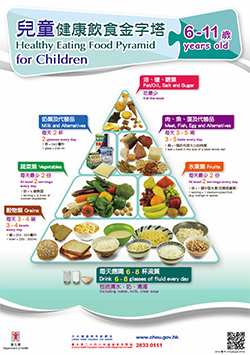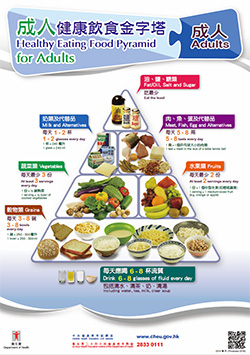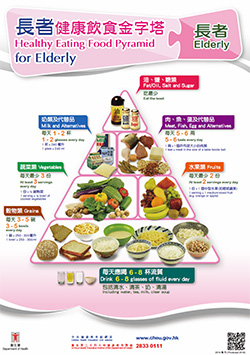
e-Learning Resources
03 Physical Well-being
Indicators for measuring physical health and their implications
| Problem | Measuring | Tool | Indicator |
|---|---|---|---|
| Abnormal growth and development | Weight (kg) and height (cm) | Scale, measuring tape |
|
| Obesity | Weight (kg) /height (m)² | Scale, measuring tape |
|
| Fat ratio | Calipers / body fat scale |
|
|
| Central obesity | Waist Circumference (cm) | Measuring tape |
|
| Waist / Hip Circumference (cm) | Measuring tape |
|
|
| Cardiovascular diseases such as heart diseases and hypertension | Pulse rate | Counting Heart rate monitor |
|
| Blood pressure | Blood Pressure Monitor |
|
Aspects of Physical Fitness
| Aspect | Examples |
|---|---|
| Muscular strength | Resistance exercise such as weight lifting |
| Muscular endurance | Marathon |
| Cardio-respiratory endurance | Aerobic exercise |
| Flexibility | Stretching, Tai-chi, Yoga |
Individual Level
| Healthy diet | ||
|---|---|---|
| Nutrition | Macro-nutrients - for growth, metabolic function and bodybuilding |
|
| Micro-nutrients - for regulating cell function |
|
|
| Malnutrition | Deficiency in nutrients / lack of particular nutrient in food |
|
| Excess of nutrients |
|
|
| Unbalanced diet | low vegetable/ fibre diets |
|
| high fat, high salt and high sugar |
|
|
| Trans fatty acid |
|
|
| Balanced Diet | ||
Cholesterol
- Low Density Lipoprotein (LDL) – Bad Cholesterol
- High Density Lipoprotein (HDL) - Good Cholesterol
Eating Disorders
- Bulimia nervosa
- Anorexia nervosa
(Online Survey : Am I having a Tendency of Getting Eating Disorders? )
Energy Balance
- Energy input vs energy output = weight gain / lose
- Unhealthy eating habits, such as the frequent consumption of high-calorie fast food, may lead to high energy input
- Insufficient physical activities due to the increasing sedentary nature of workplace and leisure activities, may lead to low energy output
- Obesity developed when energy input is much larger than the energy output
Health maintenance and disease prevention
| Personal role | Protective factors | physical activities, recreation and rest, balanced diet, good hygiene practices, protective measures (e.g. helmets, seat-belts), universal precautions |
| Risk factors | drug abuse, inadequate physical activities/rest, unbalanced diet, non-hygienic practices , harmful/unsafe practices , a sedentary lifestyle | |
| Society Role |
|
|
Latest Update: October 2019
Power-point
Details
See all e-Learning resources

Booklet
Details
World Health Organization
Details
Change for Health
Details
Central Health Education Unit, Department of Health
Details
Tasks & Worksheets (Coming Soon)
Details
Assessing my learning
| What does a healthy body mean? |
| How can an individual’s physical health be measured? |
| How can we maintain a healthy body? |










